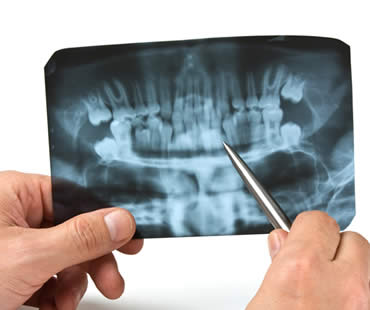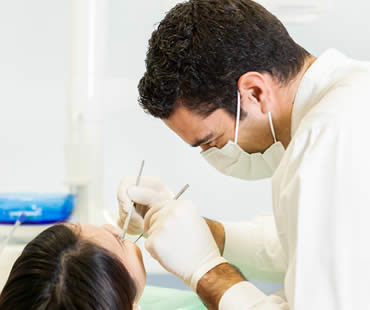
Jan 23, 2025 | Dental Topics 2, Wisdom Teeth, Blog
Wisdom teeth got their name because they are the final teeth to develop, usually in the late teens to early twenties, at a time when a person becomes fully mature or “wise.” Wisdom teeth are the third and final set of molars in the very back of the mouth. Most people have four total (two upper and two lower), but others never develop them at all. Wisdom teeth can be a valuable chewing aid, but often they are poorly aligned or don’t develop properly.
How do I know if I have them?:
Unless you start to feel them breaking through, you may not know whether you have wisdom teeth or not. Ask your dentist to examine you to see if these teeth are healthy and properly positioned. An x-ray may be required, and your dentist may refer you to an oral surgeon to be evaluated further.
Do wisdom teeth hurt?:
You don’t always feel anything with your wisdom teeth, but sometimes they are very bothersome. You may experience pain when they erupt in awkward positions, especially if the teeth rub against your mouth. Other problems include stiffness in the area, infected swelling of the gums, tooth decay, gum disease, and tooth crowding.
Why remove them?:
Your dentist or oral surgeon might suggest that your wisdom teeth be extracted. They can often predict if your wisdom teeth may crowd or damage other teeth, your jawbone, or nerves. Sometimes removal is appropriate before problems arise, in an effort to avoid more complicated or painful extractions later. Removal is usually simpler and less risky in young people. If your wisdom teeth are not extracted, it’s important for your dentist to continue monitoring them because problems may develop later.
What does impacted mean?:
Wisdom teeth may be impacted, which means they are enclosed in the soft tissue or jawbone or they only partially erupt through the gum. Impacted wisdom teeth are almost always removed to avoid risks of infection, tooth decay, and gum disease.
If you live in the Central Falls area contact us today

Jun 12, 2025 | Dental Topics 2, Wisdom Teeth, Blog
If you didn’t have your wisdom teeth out as a young person, you may be wondering about having them out as an adult. Your dentist may have recommended that you prevent future infections, cysts or pain in the jaw due to wisdom teeth that are growing under other teeth – known as impacted teeth. Even a type of tumor has been linked to impacted wisdom teeth.
Impacted teeth result when the wisdom tooth grows up under an existing tooth. Sometimes, adults have wisdom teeth that come in completely straight behind back molars. In rare cases, one or more of these teeth don’t grow at all. An x-ray can reveal the presence of the teeth. Impacted teeth cause problems with existing teeth and must come out.
Because the roots of wisdom teeth typically fully develop near the age of 24, removing them after this time can be more complicated. Roots can entwine with facial nerves, making extraction problematic. It’s recommended that adults receive a CT scan of their jaw, showing the clear positioning of facial nerves and roots, something not shown by x-rays. If the roots of the lower wisdom teeth aren’t touching or wrapped around the alveolar nerve, extraction is still possible.
Adults with wisdom teeth are at higher risk for gum disease. Gum disease has been linked to an increase of pregnancy complication and other health issues. Previously believed only to affect patients in their late 30s, this gum disease is now being shown to affect much younger patients, especially young pregnant women. Growing evidence is also connecting gum disease to inflammation due to chronic infections in the body, leading to an increased risk of diabetes and heart disease.
Talk to your dentist today to see if you should have your wisdom teeth removed. Be honest about any symptoms you’re having, such as pain or pressure, and let the professional evaluate your specific situation.
We treat patients from Central Falls and the surrounding area

May 15, 2025 | Dental Topics 2, Wisdom Teeth, Blog
Whether you are a teenager or an adult, you may have pain associated with your wisdom teeth. In a perfect situation, these back molars erupt last and fit right into your mouth without problems. Many people are not so lucky, however. It is common for these teeth to attempt to come in, but have nowhere to grow in the space where your other teeth are already established. This can result in a very painful toothache.
The first step you should take is visiting your dentist, where x-rays will be taken to see exactly what is happening in your mouth. The x-rays will be examined to determine the angle the teeth are growing, how much room is available for them to develop, and if there is any infection present. Depending upon the examination results, surgery may be necessary to remove your wisdom teeth.
Your dentist will look for signs that indicate your wisdom teeth need to be removed. The main indications for tooth removal include:
- A tooth embedded in your gums
- A tooth that is only partially erupted
- The presence of a cyst around the tooth
- A tooth growing in an awkward angle
If your dentist recommends removal, it is usually suggested to have it done as soon as possible to avoid further problems and continued pain. Sometimes it is necessary to remove only a single tooth, and in other cases multiple teeth may need to go. The complexity of the removal depends on whether the teeth are embedded, the angle of growth, and other issues. Your dentist will advise you on the safest and most effective plan for taking care of your wisdom teeth and getting rid of the pain.
Our dental office is located in Central Falls

Oct 3, 2024 | Dental Topics 2, Wisdom Teeth, Blog
Your “third molars”, which are the molars in the very back that are the last to erupt, usually start to appear during the late teen years. They may not emerge for everyone, but when they do show up they are often problematic. Most people’s jaws don’t have room for them, and sometimes they are impacted and unable to erupt at all. Here are some common symptoms that you can watch for so you’ll know when your wisdom teeth might be the culprit.
The main thing many people notice is pain as their wisdom teeth develop. These teeth in the far back of your mouth, often two upper and two lower teeth, are very unpredictable. Sometimes they erupt sideways or crooked, causing your other teeth to become misaligned or overcrowded. If your wisdom teeth erupt, you might see them poking through your gums and creating an area of tenderness, inflammation, and redness. It can be painful to eat and brush your teeth. When wisdom teeth pain is very bothersome, dentists usually recommend removing them.
You may be one of the lucky people who don’t experience wisdom tooth pain. However, there are a host of other symptoms associated with these teeth. Some of these include:
- Sore throat
- Fever
- Difficulty swallowing
- Facial swelling
- Nausea
- Pus
- Lymph gland swelling
- Inflamed gums
- Bad breath
- Problems chewing and brushing
- Cysts around impacted wisdom teeth
Any of the above symptoms warrant a visit to your dentist. Even if wisdom teeth aren’t the cause, you should find out what’s behind these problems. If your dentist determines that your wisdom teeth are impacted, you will be advised to have them surgically removed usually by an experienced oral surgeon. Wisdom teeth extraction is a common procedure, so you shouldn’t hesitate to follow your dentist’s recommendation to take care of any problems with these teeth. Once you have recovered from this surgery, you will be glad the symptoms are gone and you no longer have to worry about your wisdom teeth.
We treat patients from Central Falls and the surrounding area

Oct 19, 2018 | Dental Topics 2, Oral Surgery, Blog
Wisdom teeth are the last adult teeth to erupt into the mouth, generally emerging between the ages of seventeen and twenty-one. They are the third set of molars and are in pairs: two each on the top and bottom arch of teeth. While some patients don’t have wisdom teeth, most do. Many of those who do have them don’t have enough room for those teeth to erupt fully, causing them to be wedged under the back of another tooth, impacted in the gum.
Impacted wisdom teeth are very difficult to clean, and can negatively affect the surrounding teeth. They are highly vulnerable to disease and decay and may lead to tooth pain and damage to adjacent teeth. For these and other reasons, a dentist may recommend that the teeth be extracted through oral surgery as soon as necessary to prevent any problems.
Extraction of wisdom teeth is typically an outpatient procedure done in an oral surgeon’s office. A healthy patient can proceed with a typical surgery, but if any infection is detected, the surgery can’t move forward until the infection is cleared up through the use of a full course of antibiotics. Once the surgery is moving forward, the surgeon’s team will administer some form of anesthesia to numb the area surrounding the tooth or to possibly sedate the patient through IV sedation dentistry.
After the anesthesia has fully taken effect, the surgeon makes an incision to open the gum and to remove any bone that is blocking the tooth from extraction. The tissue connecting the bone to the tooth will be separated and the tooth will be removed. In some cases, the surgeon will have to break the tooth into smaller pieces to make it easier to remove. After thoroughly cleaning the area and removing any remaining debris, the incision will be closed, stitched and packed with sterile cotton gauze to staunch any bleeding.
The surgeon will provide aftercare instructions. Patients should follow these instructions to the letter in order to ensure the best and fastest healing of the surgical site.
If you live in the Central Falls area contact us today

Aug 17, 2018 | Dental Topics 2, Oral Surgery, Blog
Your family, general, or pediatric dentist or orthodontist may refer you to an oral and maxillofacial surgeon for some dental treatments that require oral surgery. An oral surgeon is a specialist who has graduated from an accredited dental school and also completed additional education and residency related to surgical procedures needed to treat various oral diseases and conditions. An oral surgeon is trained in treating the following conditions:
- Removal of diseased or impacted teeth
- Placement of dental implants
- Treatment of facial trauma involving gums, jaws, nasal cavities, cheekbones, eye sockets, and forehead
- Evaluation of pathologic conditions such as cysts and tumors of the mouth and face or acute infections of the oral cavity, salivary glands, neck, and jaws
- Treatment of facial pain including those caused by temporomandibular (TMJ) problems
- Cosmetic or reconstructive surgery to correct jaw, facial bone, and facial soft tissue problems
- Corrective jaw surgery
- Cleft lip and cleft palate repair
- Surgical treatment for sleep apnea
There are many different techniques that oral surgeons use to accomplish your treatment goals. The choice of techniques may vary between surgeons and should be discussed between you and your surgeon prior to the procedure.
Many oral surgery procedures can be completed in an outpatient setting. Often you are only in the office for a few hours and can return to your regular routine in a matter of days. A good oral surgeon will be able to perform these procedures with little chance of complications, and will be able to provide you with the information you need to understand the recovery process. Your oral surgeon will often collaborate with other specialists, such as an orthodontist or cosmetic dentist, to achieve your ultimate treatment goals.
We treat patients from Central Falls and the surrounding area








